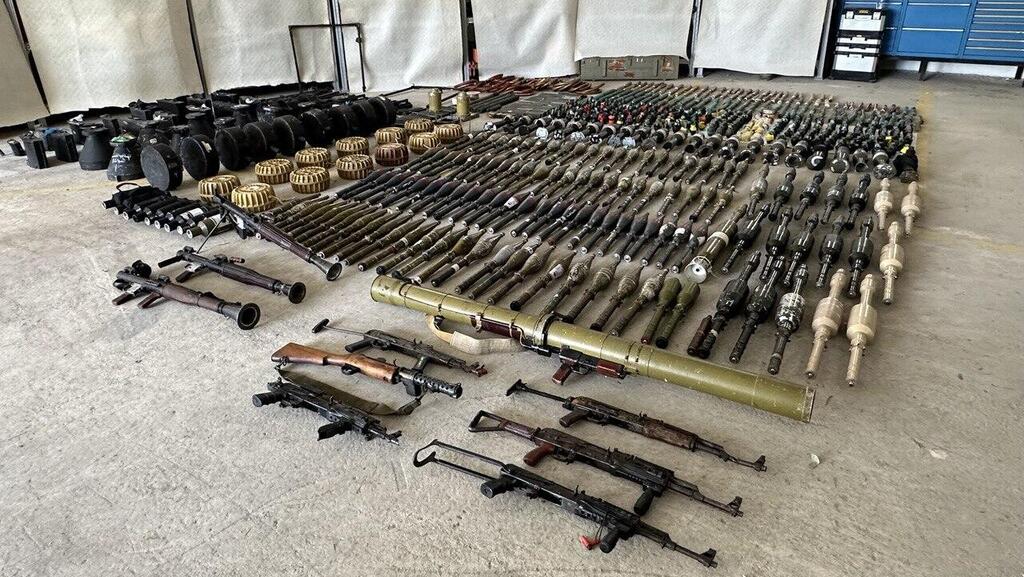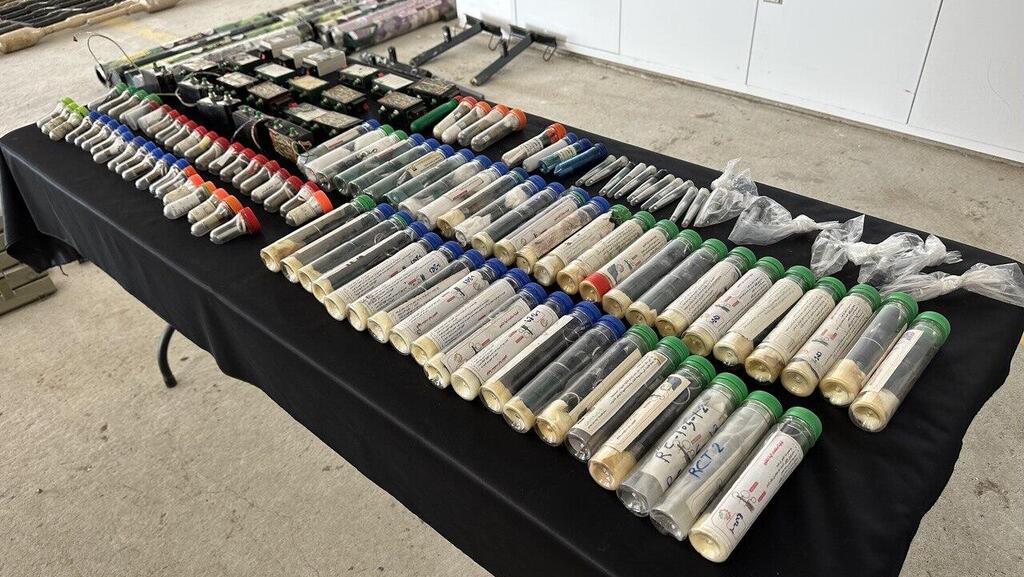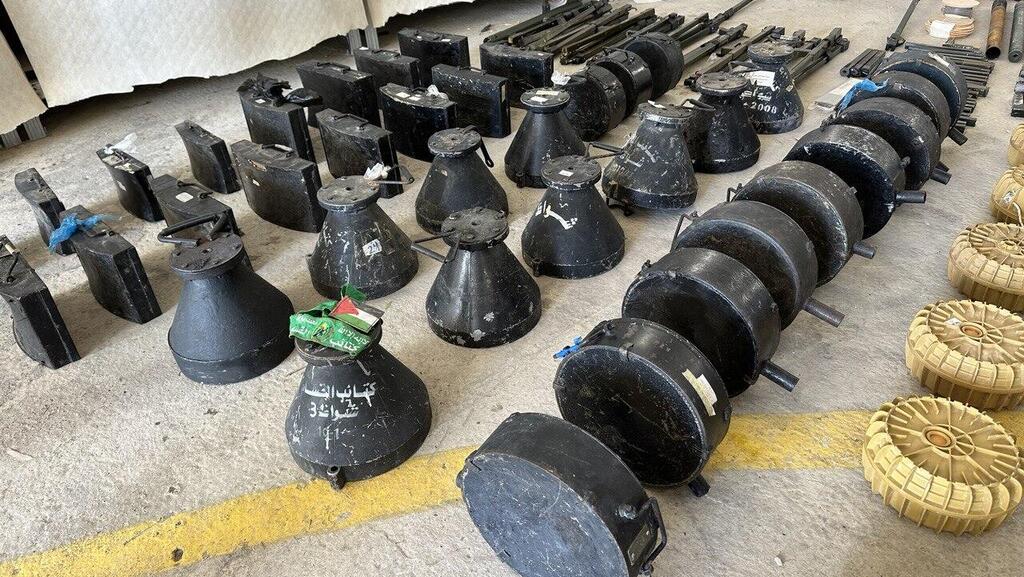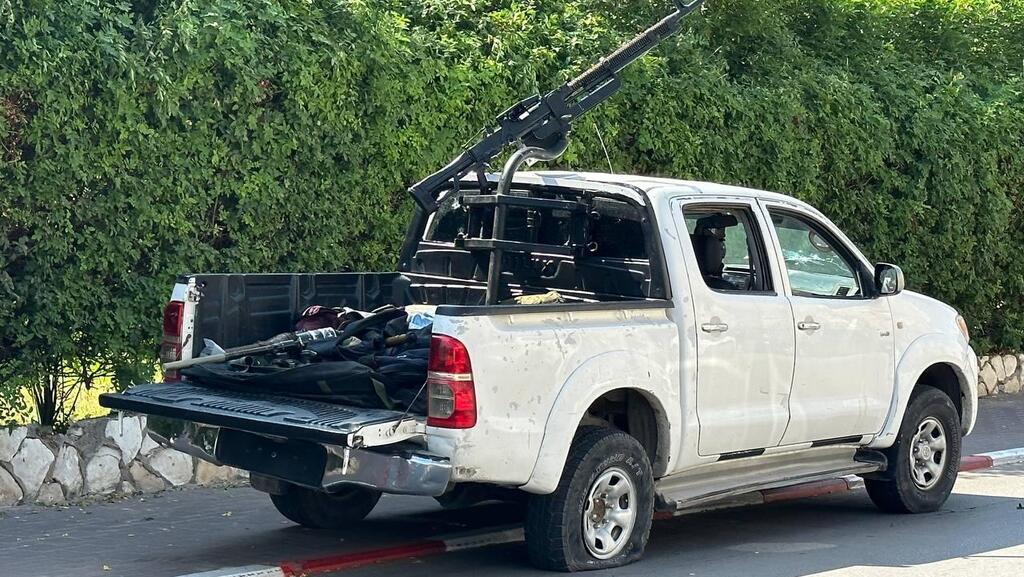Getting your Trinity Audio player ready...
Major J.
(Video: Gil Yochanan)
A week and a day after the deadly surprise terror attack by Hamas in the south, the IDF provided a glimpse on Sunday into the combat arms used by members of the terrorist organization.
Read more:
Dozens of RPG launchers, various types of explosive charges designed for different purposes, landmines, grenades and even anti-aircraft rockets are just a small portion of the weaponry that was recovered by the soldiers of the Yahalom unit, a special unit of the Combat Engineering Corps, before they are transferred to the National Institute for Weapons Research.
According to Major J., the commander of the institute, "The Yahalom forces have been in the field since the outset of the war, engaged in clearing various areas of combat means, weaponry and various charges found in vehicles, houses, streets and the bodies of terrorists. This is done to facilitate the continued operations of the IDF. Some of the combat means are destroyed in the field, while others are brought to the institute to be investigated and studied for the purpose of developing strategies and defenses against them for ongoing combat."
He added, "We weren't surprised by the diversity of the various types of weaponry, nor by the quantities we knew were in the possession of Hamas, as they have been engaged in producing combat means around the clock for a long time. What surprised us was their ability to smuggle such a massive quantity of armaments into Israeli territory. It's evident that the terrorists had planned for an extended stay within Israel's borders. They brought along an ample supply of food and medical equipment to sustain their forces in the field for prolonged combat. All of this was neutralized, thanks to the IDF's swift action."
Most of the combat means on display were locally manufactured by Hamas, rather than imported from other countries. Nevertheless, they represent an extensive array of tools designed to inflict maximum damage in various combat scenarios. Among these were anti-personnel landmines, anti-tank charges, flexible insertion charges that can be fed through small openings, powerful car and personnel-borne explosive devices, room-clearing blast charges that consume everything in their path, and magnetic attachment charges for tanks with a seven-second delay mechanism.
In addition to the numerous and diverse combat means, it is evident that Hamas has invested heavily in the careful planning and execution of the incursion, including controlling the terror organization's many forces on the ground. For instance, the terrorists who entered Israel were equipped with a large amount of well-organized combat equipment, complete with simple instructions in Arabic for activation. This allowed each of the terrorists to operate them without requiring high skill levels.
Maj. J. further said, "In the distribution of forces in the field, we found that in each of the combat zones, there was a truck loaded with about 20 RPG rockets, another one was filled with around 15 explosive charges, as well as command and communication vehicles. We found a great deal of tactical communication devices, MR5s, as well as smartphones, tablets and computers." The significance of this extensive equipment is that it points to a meticulously planned and well-controlled operation by Hamas leaders throughout the duration of the combat hours.
Yamam officers discover rice bags meant to smuggle ammunition
(Photo: Israel Police)
Meanwhile, Yamam officers who participated in battles against Hamas terrorists discovered rice bags containing weaponry that the terrorist organization smuggled into the Gaza Strip.
These soldiers, who eliminated approximately 200 terrorists at various points in southern Israel, were among the first to respond robustly to the surprise attack. After these confrontations, military intelligence personnel collected the terrorists' weaponry and found combat materials concealed within the rice bags. According to suspicions, this weaponry was smuggled into the Gaza Strip under the guise of "humanitarian aid."








